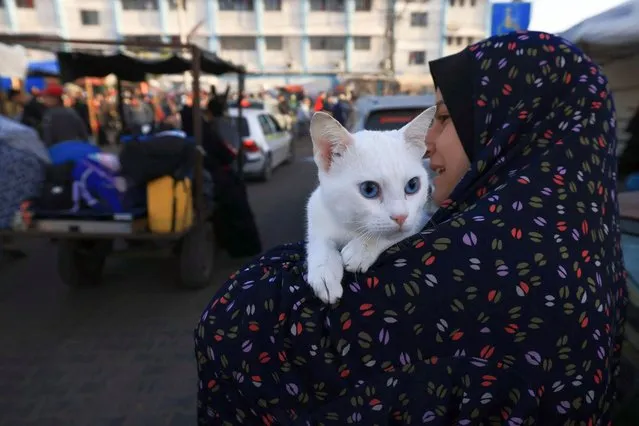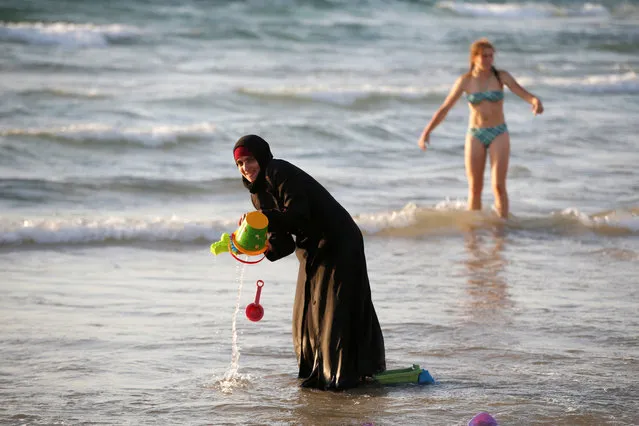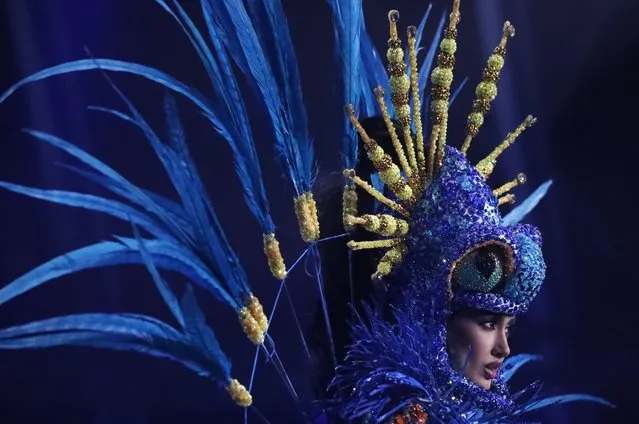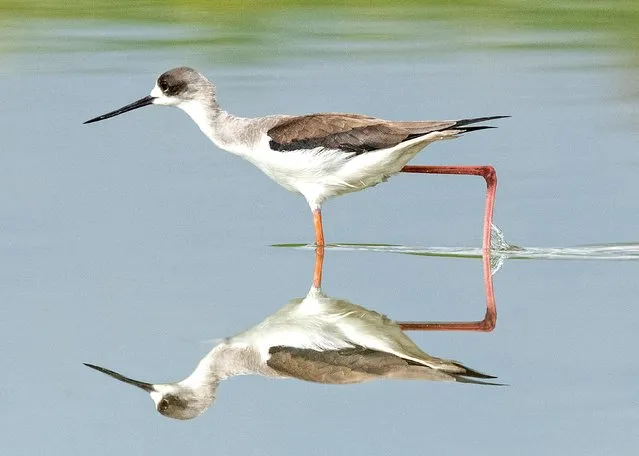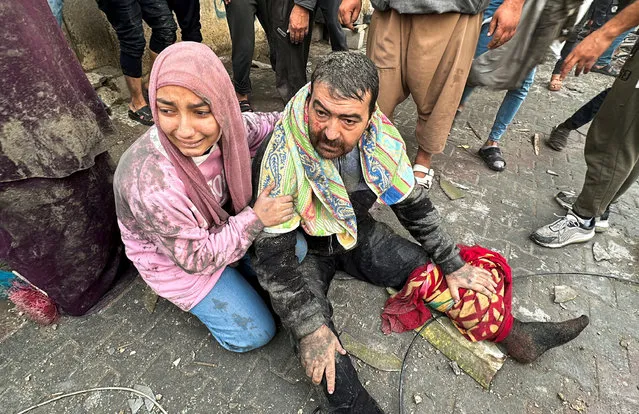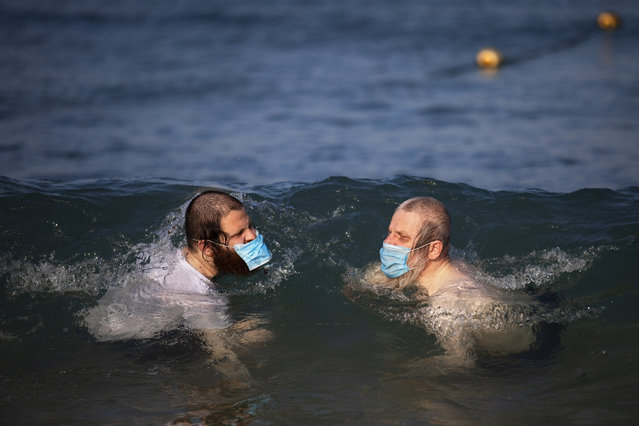
Ultra-orthodox Jewish men wearing protective face masks swim in the Mediterranean Sea, on a beach segregated for males three days a week, in Tel Aviv, Israel, Wednesday, July 8, 2020. In an effort to quell the rapid spread of the coronavirus, Israel has re-imposed a series of restrictions on the public. This week, the Israeli government limited gatherings and ordered reception halls, restaurants, bars, theaters, fitness centers and pools be shut down again. (Photo by Oded Balilty/AP Photo)
10 Jul 2020 00:07:00,post received
0 comments

